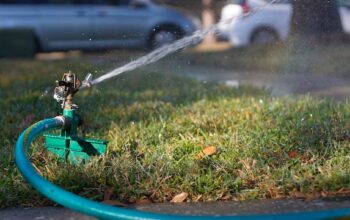Phenotyping has become an essential part of plant breeding to ensure that the breeder gets the right species every time. The term phenotype pertains to the genome of the plant as well as its encounters and interactions with mega and micro-environments during its cycle. It also refers to several properties of the species, including its biochemical and physiological characteristics.
However, the phenotyping step is causing a lot of delays in farming and breeding, and this might not look good in the future. Fortunately, today, if you’re using plant phenotyping platform, you can make the process faster and more cost-efficient. The applications of these can include the following.
Abiotic Stress in Species
The term abiotic stress refers to how non-living things and factors affect a plant. This does not refer to harmful insects or fungi which may be present in the environment where the plant is in.
Instead, it focuses on sunlight, water, wind, and climate, which are often intangible but become stressors to a specific species. Nutrient deficiencies, cold, heat, drought, and wildfires may also be included in the list, and the specialists will determine their effects in the long-term.
With the factors’ improvement, there’s a chance to increase crop yields so many farmers can cater to the ever-increasing demand for food around the world.
With the right company, you’ll get knowledge about abiotic stress that is affecting your current plants with the help of software and hardware tools. Through research, performance analysis, and well-controlled environments, the results can be read in under six weeks, and you can make the necessary changes afterwards.
Breeding for More Tolerance
Knowing how the crops are going to survive frost, drought, diseases, acidic soil, heavy metal toxicity, and salinity is essential in farming. Sometimes, heat stress can happen since there are global changes in temperature that result in physiological and biochemical reactions in plants.
There can be a significant reduction of high-quality fruits and yield, and this is where the development of canopy temperature depression, membrane thermostability, stomatal conductance, and other various factors can be useful. See more about the conductance factor on this site here.
An accurate assessment of the quantitative physiological traits like water efficiency and growth rates will result in fewer costs and progress. The best companies will be able to provide reports that are objective as a result of the meticulous studies of certain vegetable and field crops, especially those with larger populations.
Know the Effects of Pesticides and Certain Fertilizers
Optimal applications of additional nutrients like fertilizers as well as pesticides will provide healthier and juicier produce. They essentially improve the pH levels of the soil and can result in controlling various bugs and pests that may cause diseases.
Aside from measuring these additions, watering the plants according to a set schedule should also be implemented. It’s vital to know the different treatments and watering that should happen when the season changes, and this is a struggle in most farms.
With the help of right equipment with both software and hardware, the concentration of the irrigation, herbicides, and nutrients can be controlled in different soil settings or potting media. This will essentially measure the growth rates of the water or soil-based plants as well as a chart or a graphical presentation of the performance of a specific crop.
An Entire Plant’s Physiology
A popular branch of Botany is physiology, which explores the function of plants. This delves into the biochemistry and other ecological aspects of terrestrial and aquatic plants. It also aims to know how respiration, photosynthesis, and other factors will affect plant growth and how the xylem, phloem, roots, stem and leaves work together to transport nutrients for an entire species.
Today’s farmers are constantly exploring how plant adaptation can occur in certain topographies. With the help of the right phenotyping system, the genotype by environment interactions can be identified, as well as the current quantitative physiological trait of the plants.
Some platforms will provide data about a few species’ population repetitions at a certain place and if specific ambient conditions are going to help them grow better. See more about the factors that help plants grow, especially the right conditions that they need, at this link here: https://extension.oregonstate.edu/gardening/techniques/environmental-factors-affecting-plant-growth.
Root Performance
One of the primary roles of the roots is to transport water and nutrients across the leaves and the stems. When they begin to fail, it will mean that the entire plant may die.
With the sensors that are non-invasive, you will be able to know if there’s a presence of draught or measure the plant temperature more accurately. Knowing when the plant is under stress will mean taking measures to help them survive and thrive.
Related Posts

Loves home. I am here to provide how to make your home a much better place. 🙂 Blogging about HomeDecor, Home Improvements and more.











